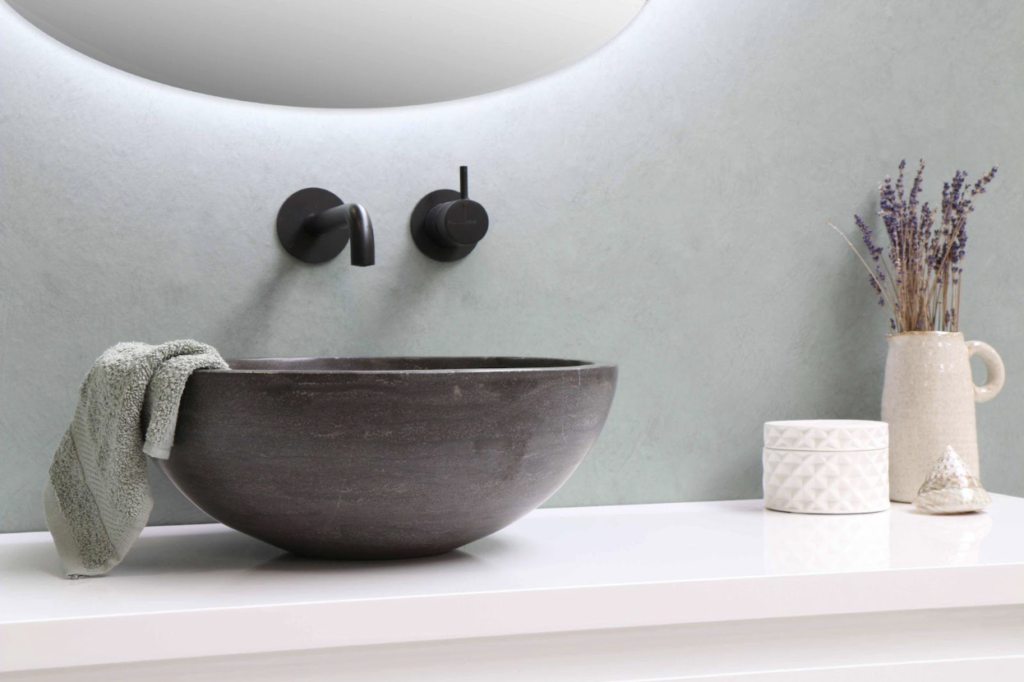
Even in the brightest, crispest bathrooms, there are still spots that are cool, damp, and dark – and those are the places that mildew loves to grow. So, if you’re wondering if mildew can grow on the stone countertops in your bathroom, the answer is yes – and the longer you leave it untreated, the more damage it will do.
In this article, you’ll find the most common signs of mildew, along with what you can do to prevent it from growing.
Signs of Mildew
Mildew needs moisture in order to grow – and moisture usually means water. So, when you’re looking for signs of mildew, look for signs of water damage, too.
Check out these five warning signs that mildew might be growing in your bathroom:
Visible Mildew
While this might be obvious, it’s worth mentioning because mildew (and mold) typically start growing underneath the surface. Once it breaches the surface, that typically means you’ve got a severe problem.
Musty Smell
In some cases, you’ll be able to smell mildew before you can see it because when the spores decompose, they emit an earthy, stale scent. If you notice a musty smell even when your bathroom is dry, you could have a mildew problem.
Ants
Ants enjoy living in moist wood, so if you have ants in your bathroom, you might have mildew growing underneath your floor tiles.
Soft Spots in the Floor
If your floor feels soft when you walk on it, that usually means the subfloor is rotting due to moisture or mildew growth. Call a professional immediately.
Wall Damage
The signs of water damage on your wall include crumbling plaster, loose/cracked tiles, discoloration, blistering paint, or gaps in the caulk or grout.
Preventing Mildew
Now that you know the warning signs of mildew, here’s what you can do to prevent it.
Since natural stones are a porous material, they can cause issues with mildew in a high-moisture room. But that doesn’t mean you should be afraid of installing them. Instead, follow these tips.
Seal Your Stone
Sealing your bathroom countertops prevents them from absorbing liquid readily. This helps water run off your shower tiles rather than getting soaked into them.
Ait Out the Bathroom
Of course, your bathroom will get wet when you shower, but mildew can only grow when the tile stays wet. For that reason, make sure your bathroom is well-ventilated and that your shower and countertops have a chance to dry between uses. Open a window or turn on the fan to encourage air flow.
Remove Excess Water
If a lot of water has collected on the floor or walls of your shower, or the surface of your countertop, use a squeegee to remove it and guide it down the drain.
Clean Your Tiles/Countertop Regularly
Residual soap scum can lead to the growth of mildew, so clean your shower tiles and countertop on a regular basis. Just make sure that you’re using gentle cleansers and not harsh chemicals!
Repair Cracks in the Grout
If you notice any cracks or gaps in the grout between your tiles, repair them quickly. These cracks could be letting water in and behind your tiles, which leads to the growth of mildew that will be hard to eradicate.
Your Mildew-Free Bathroom
Use these tips to keep an eye out for mildew and to do what you can to prevent it from growing on your bathroom countertops. To learn more, get in touch with Stone Concepts, Inc. today!

Leave a Reply